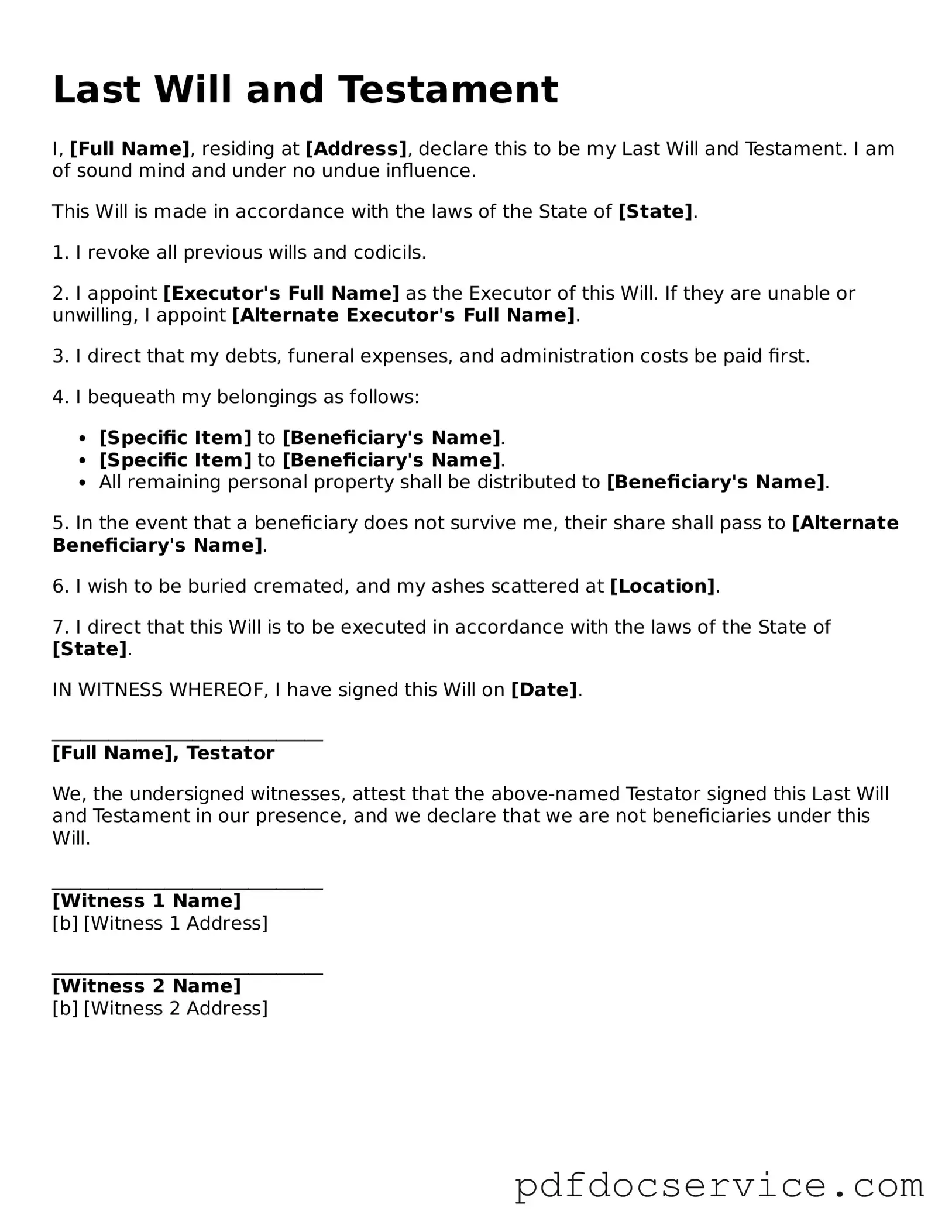What is a Last Will and Testament?
A Last Will and Testament is a legal document that outlines how a person's assets and affairs should be handled after their death. It specifies who will inherit property, who will be the guardian of minor children, and other important matters related to estate distribution.
Why is it important to have a Last Will and Testament?
Having a Last Will and Testament is crucial for several reasons:
-
It ensures that your wishes are followed regarding the distribution of your assets.
-
It can simplify the probate process for your heirs.
-
It allows you to designate guardians for your minor children.
-
It can help minimize family disputes after your passing.
Who can create a Last Will and Testament?
Generally, any adult who is of sound mind can create a Last Will and Testament. This includes individuals who are 18 years or older and capable of understanding the implications of their decisions. Some states may have specific requirements regarding age and mental capacity.
What should be included in a Last Will and Testament?
A comprehensive Last Will and Testament typically includes the following elements:
-
Identification of the testator (the person making the will).
-
A statement revoking any previous wills.
-
Appointment of an executor to manage the estate.
-
Details on how assets will be distributed among beneficiaries.
-
Appointment of guardians for minor children, if applicable.
-
Any specific bequests or gifts to individuals or organizations.
Do I need a lawyer to create a Last Will and Testament?
While it is not mandatory to hire a lawyer to create a Last Will and Testament, consulting one can be beneficial. A lawyer can help ensure that the will complies with state laws and accurately reflects your wishes. However, many people use online templates or resources to draft their wills without legal assistance.
How do I ensure my Last Will and Testament is valid?
To ensure validity, follow these general steps:
-
Make sure you are of legal age and sound mind when creating the will.
-
Sign the document in the presence of witnesses, as required by your state.
-
Have the witnesses sign the will, confirming they saw you sign it.
-
Consider having the will notarized, if applicable, to add an extra layer of authenticity.
Can I change my Last Will and Testament after it is created?
Yes, you can change your Last Will and Testament at any time while you are alive and of sound mind. Changes can be made through a codicil, which is an amendment to the original will, or by creating an entirely new will. It is important to properly revoke any previous versions to avoid confusion.
What happens if I die without a Last Will and Testament?
If a person dies without a Last Will and Testament, they are considered to have died "intestate." In this case, state laws will dictate how the deceased's assets are distributed. Typically, assets will be divided among surviving relatives according to a predetermined hierarchy established by state intestacy laws, which may not align with the deceased's wishes.
How often should I review my Last Will and Testament?
It is advisable to review your Last Will and Testament every few years or after significant life events, such as marriage, divorce, the birth of a child, or the acquisition of new assets. Regular reviews help ensure that the will accurately reflects your current wishes and circumstances.
